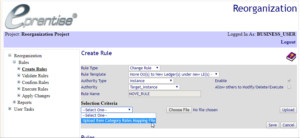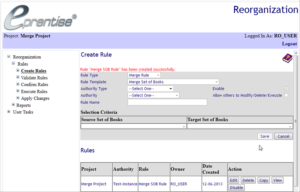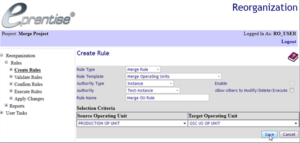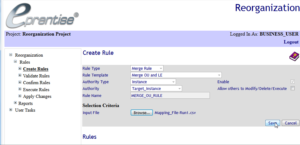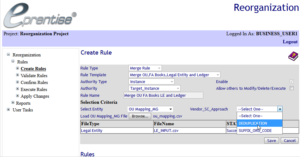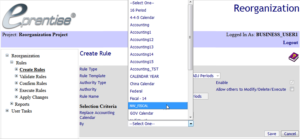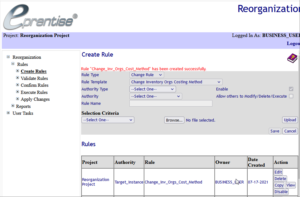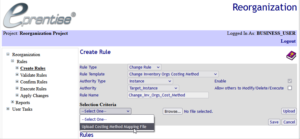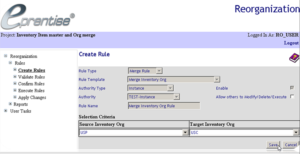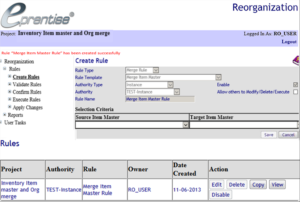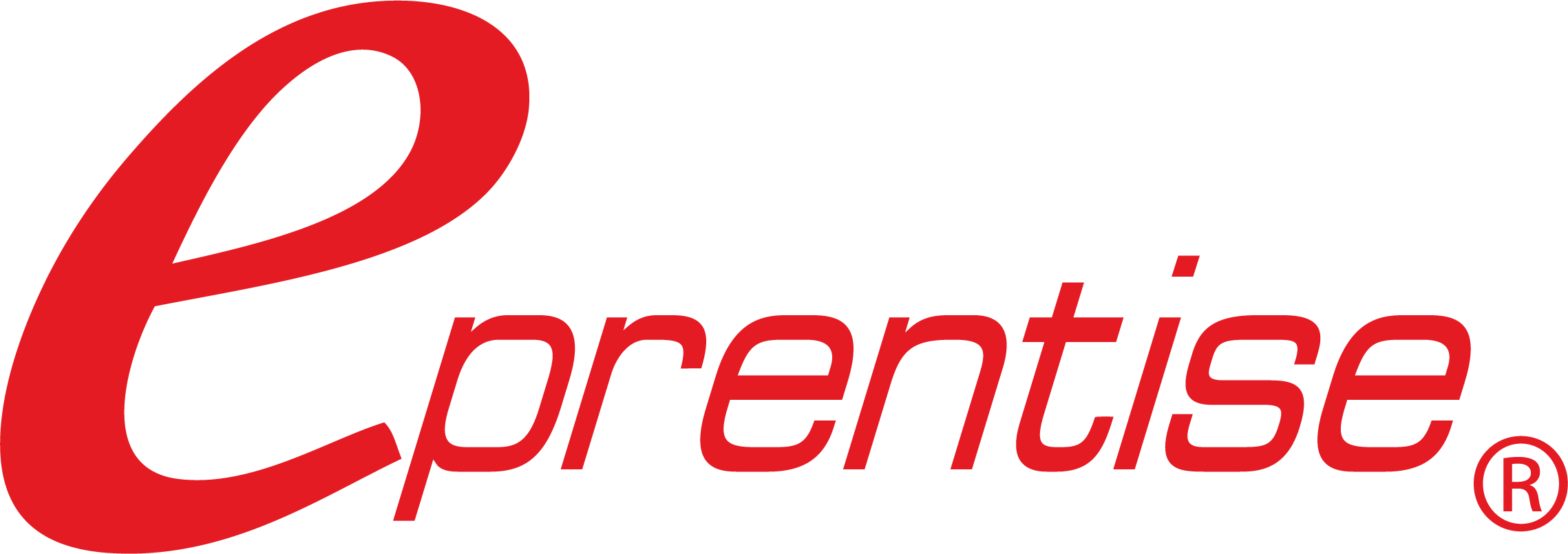Ledgers/LE/OU/INV
Remodeling Oracle E-Business Suite to better align with your current business model should be an integral part of a company’s life-cycle management strategy to ensure the best possible return on its costly ERP investment. Often, reorganization efforts are stymied by the limitations of locked-in configurations and initial set-ups or cost-prohibitive reimplementation. Most companies opt for, at best, implementation of spreadsheet schemas, and at worst, wholesale creation of outside databases and information silos that can lead to additional costs in correcting incomplete and inconsistent transactional/reporting data. By engaging in a Reorganization project, our clients can change these outdated, initial EBS configurations without the time and capital requirements of a reimplementation while retaining all history.
The eprentise Reorganization Suite of products allows clients to Copy, Filter, Change, Merge, and Move parts of the EBS configurations to better suit your current, evolving needs.
Reorganize and refresh your Ledgers, Legal Entities (LEs), Operating Units (OUs), Inventory Orgs (IOs), and Other Flexfields from the locked-in structure of your initial ERP implementation to better reflect the current organizational structure, streamline business processes for better time and cost-management, and allow room for future expansion. Feel secure and avoid risk while maintaining a full audit trail, reports of all changes made, and retaining all history in the instance.


Features and Benefits

Example Scenarios

Highlighted Resources
- Make changes to EBS without loss of history, without reimplementation, and without building bridges to reconcile
- Changes all the related data to simplify operations and reporting, increase transparency, and reduce the complexity of EBS
- Easy-to-use with automatic features, no coding – specifically designed for business users
- There are no scripts to write to extract, transform, and load data
- There is no dependence on a particular consultant or undocumented fixes, no unit testing, and no risk of compromising the data or operations in your E-Business Suite
- A built-in knowledge repository that is used to constrain the choices made in EBS to maintain the data integrity
- Reorganizations involve many thousands of related columns – many not identified in the Oracle documentation – and eprentise software learns them all
- Automatically maintains a full audit trail and reports of all changes made. All transformations are transparent to comply with statutory and regulatory requirements, SOX, and IFRS standards
- Shortens the time to completion
- eprentise Software resolves conflicts between any source or target automatically. For name conflicts, source data may be prefixed or suffixed. System IDs may be changed to resolve duplicate IDs. The software knows every place that the data needs to be changed to maintain the relational and data integrity.
- Move functionality repoints a source to a new target structure (Move a LE to a new ledger or an OU to a new LE, or an IO to a new OU, or an Item Master to a new OU). All relationships are maintained and all related data including all history is repointed to the new structure.
- Merge functionality resolves conflicts resulting from duplicates and results in the union of the source and the target. If data is in the target but not in the source, it remains unchanged. If data is in the source, but not in the target, it is merged with the existing target data. If (identical) data is in both the source and target, the source data will be synchronized with the IDs of the target data. All conflicts are resolved, and the software maintains all history.
- Copy creates a duplicate structure. Clients sometimes use copy to maintain an original configuration for history and audit purposes since eprentise Software generally changes all history to make the transformation look like it was in place from the original implementation.
- Filter functionality is used to make changes to selected data or to separate out data within an EBS instance.
- Change allows for changing an underlying structure such as a key flexfield or a key function like removing encumbrance accounting or change inventory valuations.
- There are hundreds of different business scenarios supported by eprentise Reorganization Software to Move, Copy, Filter, Change, or Merge EBS data.
- All of the eprentise Reorganization software uses a process of mapping a source to a desired target, usually on a spreadsheet that is loaded into the software.
- Merge, Split or Move Ledgers or Legal Entities in order to more accurately reflect your current business structure or your tax requirements
- Consolidate your reporting by moving legal entities from one ledger to another
- Redesign and reorganize your ledger structure for subledger accounting, secondary ledgers and anticipated growth, allowing you to operate globally while still complying with local and statutory requirements
- Restructure the enterprise for global expansion
- Merge, Move, or Split operating units to share or segregate sensitive data for different parts of the organization
- Restructure to more easily run a Shared Service Center (SSC)
- Streamline security rules and administration as well as business processes
- Enable better customer service and supplier leverage
- Configure your operating units to take advantage of Multi-Org Access Control (MOAC)
- Merge, Split, or Move inventory or subinventory organizations to reduce costs, save time, and increase accuracy
- Move inventory organizations to new operating units to standardize on operating procedures
- Change costing for inventory organizations without clearing out all invoices and orders for inventory items
- Reduce days-sales-outstanding by making inventory items more accessible
- Increase ease and accuracy of product-oriented reporting
- Change other EBS flexfields other than the accounting flexfield (see FlexField Software for changing the accounting flexfield)
- Change job and position, asset, asset category, location, item category, and system item flexfields to more accurately reflect the way you want to track your business
- Change the costing structures to report differently for diverse categories of information
- Make reorganizations easier, change depreciation methods, and standardize item catalogs from diverse sources
- Read our Reorganization Datasheet
- You may also want to review our Key FlexField Datasheet
- Check out these whitepapers:
Product Screens

